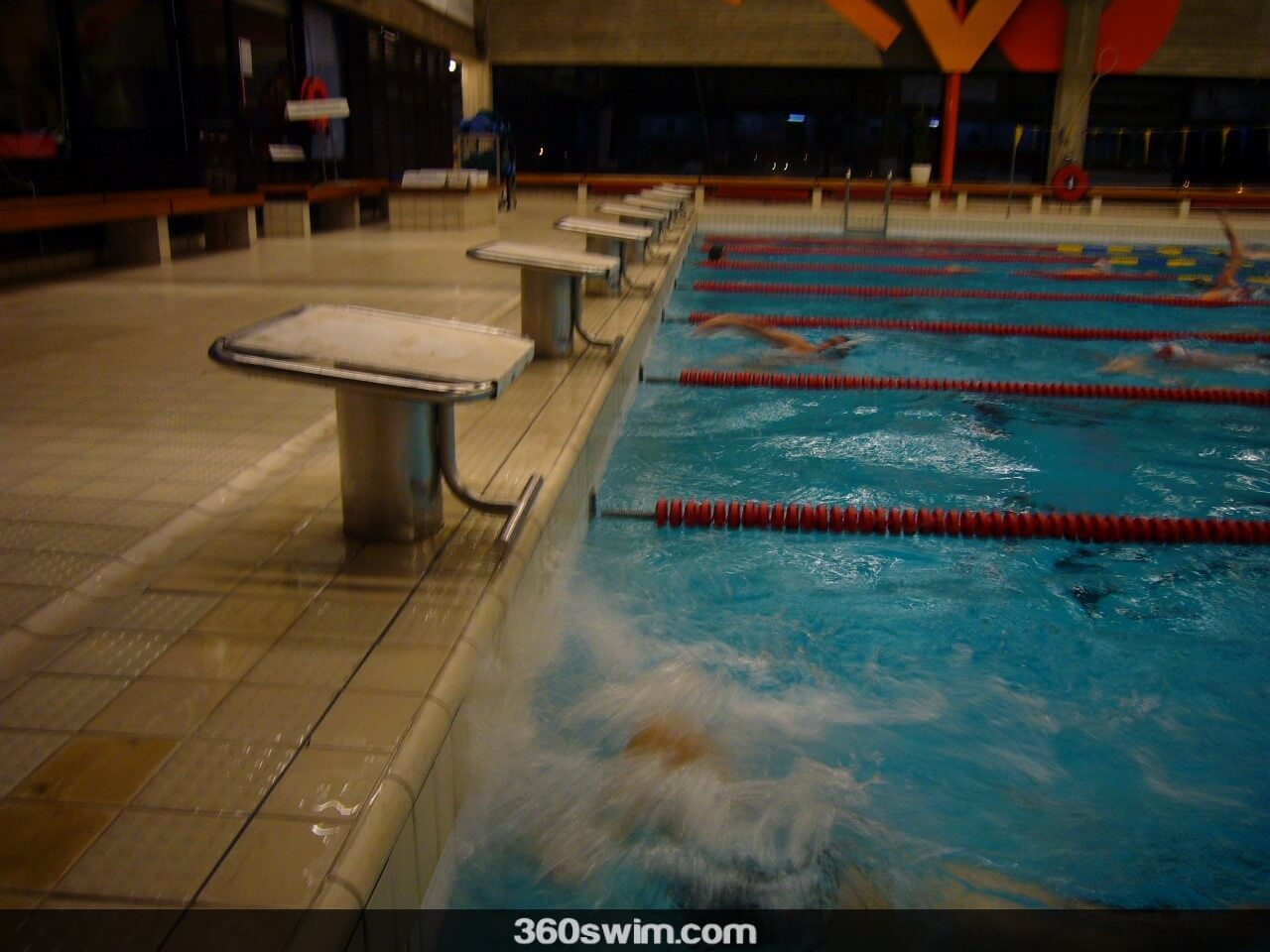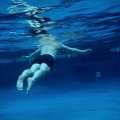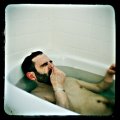HOW TO DO BACK TO BREAST TURNS (OPEN VS. BUCKET VS. CROSS-OVER)
In the individual medley races, there are a lot of transitions between strokes: fly to back, back to breast, breast to free where each swimmer could either gain or lose time on the opponents.
Usually, the most complex turn is the one from backstroke to breaststroke.
In the history of swimming, this turn has evolved into a very fast and sophisticated sequence of movements that is quite tricky to master for a lot of us. Even very good swimmers take a bit of coordination and time to learn it.
Here is a rundown of the turn evolution from the time it was required to touch the wall on swimmer's back to execute the turn.
Quick Jump To:
- Back to Breast Open Turn or Touch Turn
- Backwards Flip Turn or Bucket Turn or Rolling Turn or Suicide Turn
- Cross-over Turn
- FAQ
Back to Breast Open turn or Touch turn
The open turn is basically very similar to a one-hand touch freestyle open turn with the only difference that you glide to the wall on the back.
The most important part here is to reach for the wall on a side, but still slightly leaning on the back. Then very quickly bring your legs to your chest. In other words basically, you are pivoting on your butt to make this rotation turn.
This turn is the easiest to master and when done well can be very effective.
The main advantage of this turn is that you get a lot of oxygen going into your breaststroke pullout, so you can make sure it is a long one.

🎥 Watch: Open Turn Technique Explained
Backwards flip turn or Bucket turn or Rolling turn or Suicide turn
The bucket turn requires a bit more skill, but it basically is just a backward flip with the touch on the wall.
The main point to talk about here is that the start of the turn has to be with the palm touch way below the surface of the water. So actually the swimmer has already initiated the turn before the hand touches the wall.
After that, again tucking your knees is the common element.
One problem with this turn is that it requires quite a good lung capacity to execute the breaststroke pullout afterward. So unless you can hold your breath long enough to not cut the breaststroke pullout short, I would not recommend it. Hence the name "Suicide Turn" I presume :).
🎥 Watch: Bucket Turn Demonstration
Cross-over Turn
This is the newest of the turns.
If executed well, it is much faster, so in shorter individual medley distances such as 100 or 200, it would make more sense to learn it.
However, if you look at it quickly, you will probably feel confused as to which hand touches the wall and on what side to flip your body onto:).
No worries, the below video is very good at describing how it is done. I couldn't have explained it better.
In short, after you touch the wall with your upper arm over your body (keep on your back slightly), you will need to drive your butt in the direction below the hand that touches the wall to complete the turn.
So in a way, it could be performed on a side or as a regular tumble turn depending on how coordinated the swimmer is.
🎥 Watch: Cross-over Turn Tutorial
Confused? No problem, the pool is yours and with time you will get it :).
Maybe the below video will help. It has a more detailed explanation with a very nice commentary from Garry Hall Sr.'s Race Club down in Islamorada, Florida.
🎥 Watch: Race Club Detailed Cross-over Analysis
And here is one more. This one even has some dryland explanation for better visualization.
Third time is a charm :).
🎥 Watch: Cross-over Turn Dryland Visualization
So, there you have it.
Backstroke to breaststroke individual medley transition explained. Good luck and don't be shy to let me know below your preferred way of turning.
Frequently Asked Questions
What are the different types of back-to-breast turns?
The three main types are the Open Turn (or Touch Turn), the Bucket Turn (also called Backwards or Suicide Turn), and the Cross-over Turn. Each has a different technique and speed profile.
Which back-to-breast turn is the fastest?
The Cross-over Turn is the fastest when performed correctly. It’s now commonly used in competitive medley races for its quick rotation and minimal wall time.
What is the easiest back-to-breast turn to learn?
The Open Turn (Touch Turn) is the easiest to master. It’s slower but ideal for beginners because it allows more breathing time and better body control during the transition.
Why is the Bucket Turn called a 'Suicide Turn'?
Because it requires a deep hand touch and fast backward flip that limits breathing before the breaststroke pullout. Swimmers with low lung capacity often find it difficult to execute efficiently.
Is the Cross-over Turn legal in competition?
Yes. As long as you touch the wall on your back and transition onto your front before the breaststroke pullout, the turn is legal under FINA rules.
How can I practice these turns safely?
Start with the Open Turn to build spatial awareness, then progress to the Bucket Turn and finally the Cross-over Turn. Practice each step slowly, focusing on rotation control and wall placement.
Do elite swimmers still use the Open or Bucket turn?
Occasionally, yes, especially in longer IM races or for swimmers who prioritize oxygen intake and stability over speed. But the Cross-over Turn dominates short-distance medleys.
 LNURL1DP68GURN8GHJ7URP0YHRXD3SWDMKJMFWVDHK6TMVDE6HYMRS9A4HSCNCWFXSH3NN0H
LNURL1DP68GURN8GHJ7URP0YHRXD3SWDMKJMFWVDHK6TMVDE6HYMRS9A4HSCNCWFXSH3NN0H




































